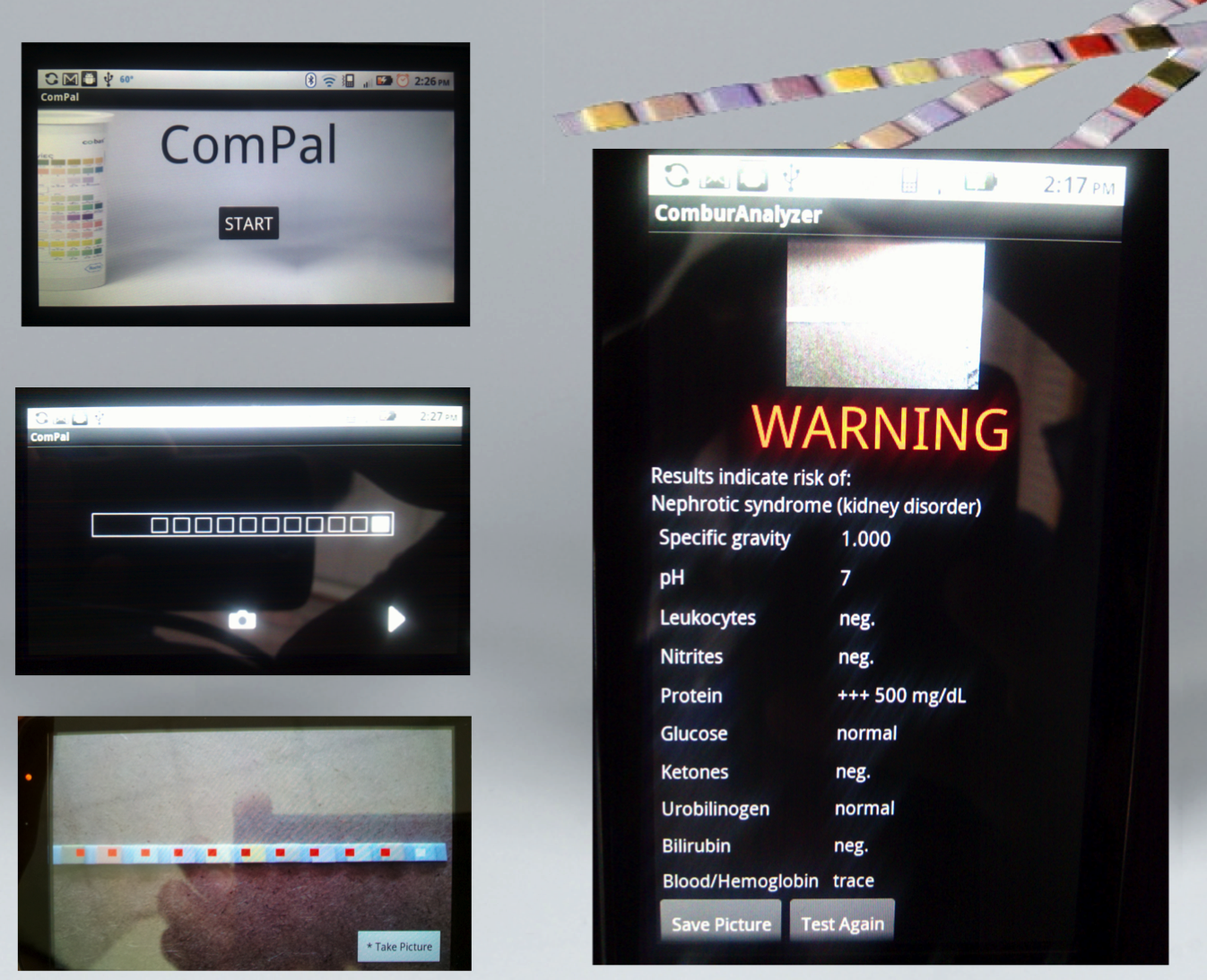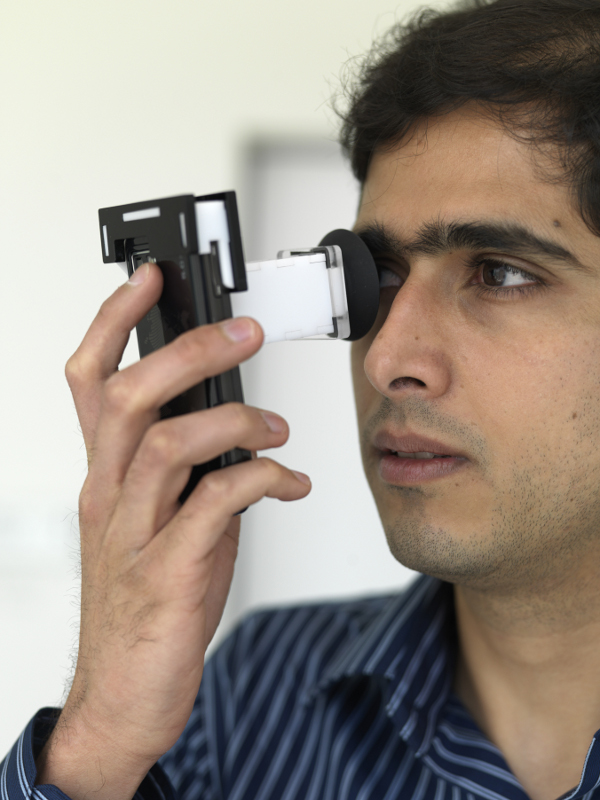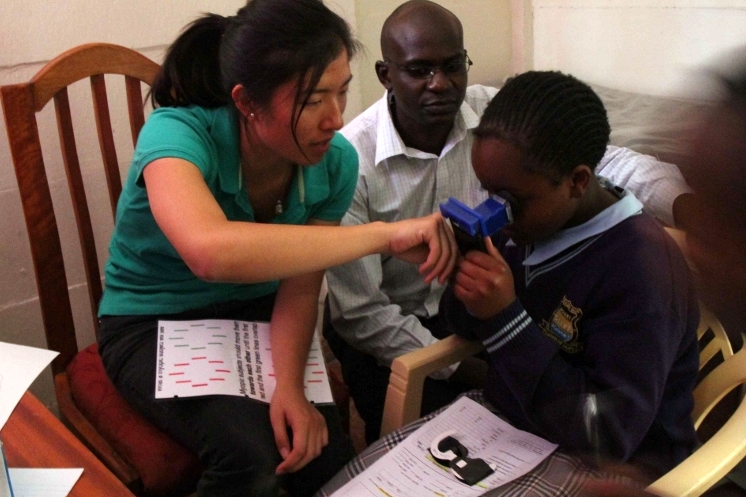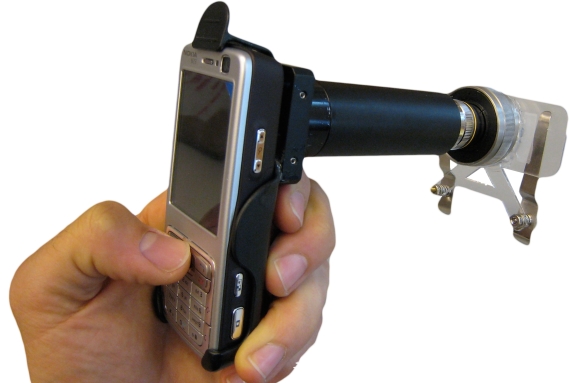Remember the Star Trek medical tricorder? Last month the X Prize Foundation and Qualcomm announced plans for a $10 million Tricorder X Prize competition, to create a handheld device that diagnoses patients as well as trained physicians could. According to Jessia Ching, the X Prize Foundation staffer developing the contest rules, the goal of the competition is to "change the mindset" around healthcare delivery.1 "Imagine a future," says Qualcomm CEO Paul Jacobs, "where the tricorder is just another app on your phone."2
The tricorder is still science fiction, but the mindset change Ching anticipates is solidly under way. Figure 1 shows a conceptual image of a MEDIK (Medical Design and Invention Kit) being developed at the MIT project Innovations in International Health, led by José Gómez-Márquez, which creates practical medical devices for use in poor countries. MEDIKs, according to José, are "erector sets for medical devices," components that you can combine to build EKG units, stethoscopes, and vital signs diagnostics. They are designed to support invention by "McGyver docs and nurses" working in global health. "Bear in mind, we're not just giving them the final devices. We're providing a toolkit that allows them to build these devices, add things such as telemetry and data logging, and create interesting modifications to make them more rugged, modular, and useful for their settings."

Figure 1. Phone-Enhanced Smart Birth Kit
Photo courtesy of José Gómez-Márquez
The kit in Figure 1 is a proposed phone-enhanced Smart Birth Kit for midwives in rural areas. The phone uses RFID tagging to check which parts of the kit are available (some parts may have been lost or broken under rugged conditions) and suggests diagnostic and treatment protocols tailored to the available parts. José and colleagues were in Nicaragua's Ocotal region in February, field-testing non-phone–enhanced MEDIKs for Vital Signs and Prosthetics. The Smart Birth Kit is projected for the coming year.3
The combination of communication, simple computing, and sensors already available on smartphones could be transformative for health care in the developing world. In April, three undergrads in my mobile apps class — Angela Chang, Emily Kuo, and Bradley Wu — worked under José's direction to create ComPal, a diagnosis app for medical testing in the developing world. The ComPal uses Hoffman-LaRoche's Combur urinalysis strips to enable anyone with the app to perform quick preliminary diagnoses. Figure 2 shows ComPal in action. You prepare a sample, line up the strip using guides shown on the phone, and take a picture. The phone does some simple image processing to recognize the colored patches on the strip and displays the test results.

Figure 2. ComPal Medical Diagnosis App
Photos courtesy of Angela Chang, Emily Kuo, and Bradley Wu
ComPal is the kind of class project that teachers like me live for: simple, elegant, and significant. It's not ready for prime time, but it demonstrates the potential to create mobile technology that has important impact, even within the confines of a three-week undergraduate class project.
The opportunities expand enormously if we supplement the phone's hardware, even with inexpensive parts. NETRA (Near-Eye Tool for Refractive Assessment) is a $2 eyepiece that clips on a cell phone. It helps diagnose nearsightedness, farsightedness, and astigmatism, replacing the expensive instruments like phoropters (that device with all the lenses they use when reading a wall chart during an eye examination). With NETRA, you look through the eyepiece and the phone projects patterns you align by pressing the arrow keys. After two minutes of projecting patterns, the phone produces prescription data. (A research report on the system was presented at ACM SIGGRAPH last July.4) Figure 3 shows NETRA being demonstrated by MIT Media Lab postdoctoral associate Ankit Mohan. Figure 4 shows NETRA being tested in Nairobi, Kenya, and the team plans to test NETRA in Boston this summer.

Figure 3. Demonstration of NETRA by Ankit Mohan
Photo by Andy Ryan

Figure 4. Tests of NETRA in Nairobi, Kenya
Photo courtesy of MIT Media Lab
Using more elaborate attachments opens up the new field of mobile medical microscopy, where the pioneering example is CellScope from the Fletcher Lab in UC Berkeley's Blum Center for Developing Economies. Shown in Figure 5, CellScope uses a tube with inexpensive optics (target cost: less than $100) that fits over the phone camera lens and turns it into a high-quality microscope with images (Figure 6) good enough for diagnosing malaria or sickle-cell anemia. With image-recognition software that runs on the phone, the system can automatically count tuberculosis bacteria in sputum samples.5

Figure 5. UC Berkeley's CellScope for Mobile Medical
Photo by David Breslauer

Figure 6. Image as Seen on Phone
Photo courtesy of Fletcher Lab, UC Berkeley, from the video Diagnosing Malaria with a Nokia
As educators, we all know the cliché about how when new technology appears, people keep using it for the same old stuff and only gradually learn to take real advantage of its possibilities. I've got to admit that when I first started thinking about mobile apps, I thought of them mostly as small versions of laptop computers with location awareness (which is a lot!) and saw them as ways for students to explore cloud services, media computing, and social computing. Examples like the ones here show that the potential for mobile apps is much greater.
The X-PRIZE Tricorder competition is supposed to be announced in 2012. Who knows? Maybe there will be a real tricorder in a few years. But meantime, there are terrific opportunities now to improve healthcare with a smartphone, inexpensive equipment — and creativity. With that recipe, it's not too much to expect that mobile apps could change the world, even in class projects.
A great way to stay current on opportunities around mobile healthcare for the developing world is to follow José Gómez-Márquez's Blog, Little Devices that Could.
- "The X PRIZE Foundation and Qualcomm Join Forces to Develop a Competition to Enhance Integrated Digital Health," May 10, 2011.
- "QualComm and the X Prize Foundation Move to Energize Diagnostics with $10M 'Tricorder Prize'," Bruce Bigelow, XConomy, May 10, 2011.
- MEDIK: Dispatches from the Field, José Gomez-Marquez, Blog: Little Devices that Could, Feb. 13, 2011.
- Vitor F. Pamplona, Ankit Mohan, Manuel M. Oliveira, and Ramesh Raskar, "NETRA: Interactive Display for Estimating Refractive Errors and Focal Range," Proceedings of SIGGRAPH 2010, ACM Transactions on Graphics, vol. 29, no. 4 (2010).
- David N. Breslauer, Robi N. Maamari, Neil A. Switz, Wilbur A. Lam, and Daniel A. Fletcher, Mobile Phone Based Clinical Microscopy for Global Health Applications, PLoS One (July 2009). Also see the video lecture CellScope Telemicroscopy: Bringing Microscopes Out of the Lab and Into the Field, where team member Erik Douglas of UC Berkeley discusses CellScope and field tests of the system in the Congo.
© 2011 Hal Abelson. The text of this EQ article is licensed under the Creative Commons Attribution 3.0 license.
